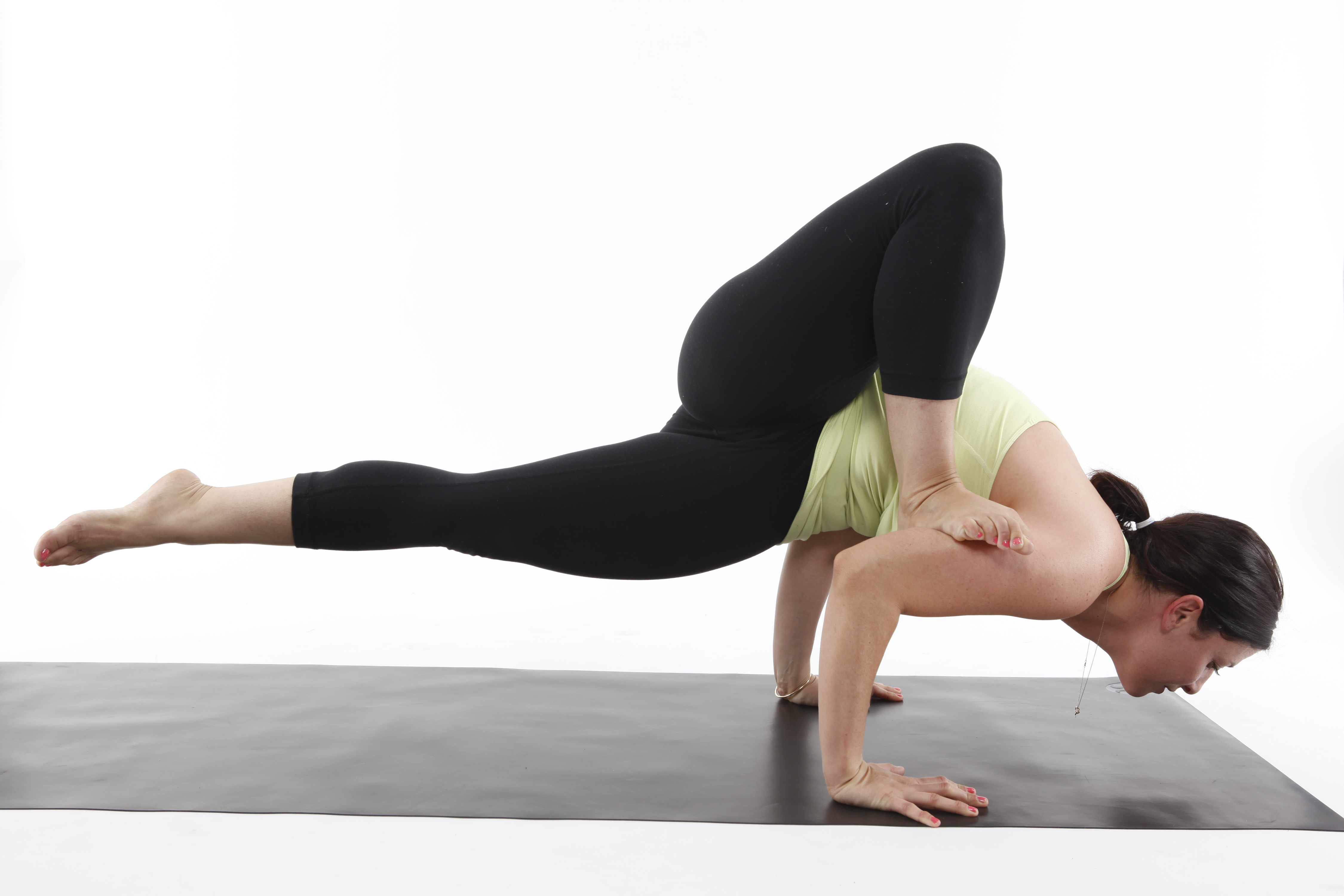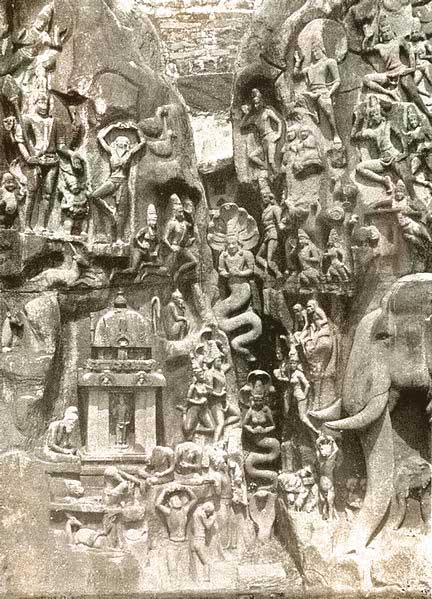|
Prasarita Padottanasana
Prasarita Padottanasana (Sanskrit: प्रसारित पादोत्तानासन, IAST: Prasārita Pādottānāsana) or Wide Stance Forward Bend is a standing forward bend asana in modern yoga as exercise. Etymology and origins The name comes from the Sanskrit ''Prasārita'' (प्रसारित) meaning "spread out", ''Pada'' (पाद) meaning "foot", ''Uttan'' (उत्तान) meaning "extended", and ''Asana'' (आसन) meaning "posture" or "seat". The pose is not found in medieval hatha yoga texts. It is described in the 20th century by Krishnamacharya in Yoga Makaranda and Yogasanagalu, and also by his to pupils, Pattabhi Jois in his Ashtanga Vinyasa Yoga, and B. K. S. Iyengar in his '' Light on Yoga''. Description This is a standing pose with the feet wide apart and the body folded forward and down until in the completed pose the head touches the ground and the hands are placed flat on the ground, the tips of the fingers in line with the h ... [...More Info...] [...Related Items...] OR: [Wikipedia] [Google] [Baidu] |
Practice (1) (16383984312)
Practice or practise may refer to: Education and learning * Practice (learning method), a method of learning by repetition * Phantom practice, phenomenon in which a person's abilities continue to improve, even without practicing * Practice-based professional learning Medical and pharmacy * Medicine, Medical practice, providing healthcare Law * Legal practice * Practice of law Art, media, and entertainment * Practice chanter, a musical instrument used to practice the Great Highland bagpipes * ''The Practice'', a television series about a legal practice Other * Best practice * Practice theory, a family of theories in sociology * Spiritual practice * Standards and Practices, a conventional, traditional, or otherwise standardised method See also * The Practice (other) * Praxis (other) {{disambig ... [...More Info...] [...Related Items...] OR: [Wikipedia] [Google] [Baidu] |
Light On Yoga
''Light on Yoga: Yoga Dipika'' (Sanskrit: योग दीपिका, "Yoga Dīpikā") is a 1966 book on the Iyengar Yoga style of modern yoga as exercise by B. K. S. Iyengar, first published in English. It describes more than 200 yoga postures or asanas, and is illustrated with some 600 monochrome photographs of Iyengar demonstrating these. The book has been described as the 'bible of modern yoga', and its presentation of the asanas has been called "unprecedented" and "encyclopedic". It has been translated into at least 23 languages and has sold over three million copies. Context Yoga is a group of physical, mental, and spiritual practices from ancient India, forming one of the six orthodox schools of Hindu philosophical traditions. In the Western world, however, yoga is often taken to mean a modern form of medieval Hatha yoga, practised mainly for exercise, consisting largely of the postures called asanas. B. K. S. Iyengar (1918-2014) was born in a poor family ... [...More Info...] [...Related Items...] OR: [Wikipedia] [Google] [Baidu] |
Yoga Block
A yoga brick or yoga block is a smooth block of wood or of firm but comfortable material, such as hard foam rubber or cork, used as a prop in yoga as exercise. The use of wooden bricks to assist in alignment was introduced by B. K. S. Iyengar, founder of Iyengar Yoga, and has spread to practices such as Restorative Yoga and Yin Yoga. History B. K. S. Iyengar, who founded Iyengar Yoga in the 1970s, introduced the use of yoga props including bricks and straps to assist his students towards correct alignment in the asanas. He recommended that yoga bricks be similar in size to a house brick, 9 x 4.5 x 3 inches (22.5 x 11 x 7.5 cm) in size. Iyengar yoga institutions sell unbranded props such as bricks, belts, bolsters and blankets. Considerations Yoga bricks are manufactured in a variety of materials, sizes, and colours. Lydia Willgress, writing in ''The Independent'', states that the key considerations are the hardness of the material, which influences the comfort and suppo ... [...More Info...] [...Related Items...] OR: [Wikipedia] [Google] [Baidu] |
Yoga Journal
''Yoga Journal'' is a website and digital journal, formerly a print magazine, on yoga as exercise founded in California in 1975 with the goal of combining the essence of traditional yoga with scientific understanding. It has produced live events and materials such as DVDs on yoga and related subjects. The magazine grew from the California Yoga Teachers Association's newsletter, which was called ''The Word''. ''Yoga Journal'' has repeatedly won Western Publications Association's Maggie Awards for "Best Health and Fitness Magazine". It has however been criticized for representing yoga as being intended for affluent white women; in 2019 it attempted to remedy this by choosing a wider variety of yoga models. Beginnings ''Yoga Journal'' was started in May 1975 by the California Yoga Teachers Association (CYTA), with Rama Jyoti Vernon as President, William Staniger as the founding editor, and Judith Lasater on the board and serving as copy editor. Their goal was to combine "the ess ... [...More Info...] [...Related Items...] OR: [Wikipedia] [Google] [Baidu] |
Yoga Brick
A yoga brick or yoga block is a smooth block of wood or of firm but comfortable material, such as hard foam rubber or cork, used as a prop in yoga as exercise. The use of wooden bricks to assist in alignment was introduced by B. K. S. Iyengar, founder of Iyengar Yoga, and has spread to practices such as Restorative Yoga and Yin Yoga. History B. K. S. Iyengar, who founded Iyengar Yoga in the 1970s, introduced the use of yoga props including bricks and straps to assist his students towards correct alignment in the asanas. He recommended that yoga bricks be similar in size to a house brick, 9 x 4.5 x 3 inches (22.5 x 11 x 7.5 cm) in size. Iyengar yoga institutions sell unbranded props such as bricks, belts, bolsters and blankets. Considerations Yoga bricks are manufactured in a variety of materials, sizes, and colours. Lydia Willgress, writing in ''The Independent'', states that the key considerations are the hardness of the material, which influences the comfort and sup ... [...More Info...] [...Related Items...] OR: [Wikipedia] [Google] [Baidu] |
Standing Pose
The standing asanas are the yoga poses or asanas with one or both feet on the ground, and the body more or less upright. They are among the most distinctive features of modern yoga as exercise. Until the 20th century there were very few of these, the best example being Vrikshasana, Tree Pose. From the time of Krishnamacharya in Mysore, many standing poses have been created. Two major sources of these asanas have been identified: the exercise sequence Surya Namaskar (the salute to the sun); and the gymnastics widely practised in India at the time, based on the prevailing physical culture. The origin of standing asanas has been controversial since Mark Singleton argued in 2010 that some forms of modern yoga represent a radical reworking of hatha yoga, in particular by adding standing asanas and transitions ( vinyasas) between them, and by suppressing most non-postural aspects of yoga, rather than a smooth continuation of ancient traditions. These changes enabled yoga to be practise ... [...More Info...] [...Related Items...] OR: [Wikipedia] [Google] [Baidu] |
Standing Asanas
The standing asanas are the yoga poses or asanas with one or both feet on the ground, and the body more or less upright. They are among the most distinctive features of modern yoga as exercise. Until the 20th century there were very few of these, the best example being Vrikshasana, Tree Pose. From the time of Krishnamacharya in Mysore, many standing poses have been created. Two major sources of these asanas have been identified: the exercise sequence Surya Namaskar (the salute to the sun); and the gymnastics widely practised in India at the time, based on the prevailing physical culture. The origin of standing asanas has been controversial since Mark Singleton argued in 2010 that some forms of modern yoga represent a radical reworking of hatha yoga, in particular by adding standing asanas and transitions ( vinyasas) between them, and by suppressing most non-postural aspects of yoga, rather than a smooth continuation of ancient traditions. These changes enabled yoga to be practise ... [...More Info...] [...Related Items...] OR: [Wikipedia] [Google] [Baidu] |
Pattabhi Jois
K. Pattabhi Jois (26 July 1915 – 18 May 2009) was an Indian yoga guru who developed and popularized the flowing style of yoga as exercise known as Ashtanga vinyasa yoga. In 1948, Jois established the Ashtanga Yoga Research Institute in Mysore, India. Pattabhi Jois is one of a short list of Indians instrumental in establishing modern yoga as exercise in the 20th century, along with B. K. S. Iyengar, another pupil of Krishnamacharya in Mysore. Jois sexually abused some of his yoga students by touching inappropriately during adjustments. Sharath Jois has publicly apologised for his grandfather's "improper adjustments". Biography Early life Krishna Pattabhi Jois was born in a Kannada Brahmin family on 26 July 1915 ('' Guru Pūrṇimā'', full moon day) in the village of Kowshika, near Hassan, Karnataka, South India. Jois's father was an astrologer, priest, and landholder. His mother took care of the house and the nine children - five girls and four boys - of whom Pattabhi ... [...More Info...] [...Related Items...] OR: [Wikipedia] [Google] [Baidu] |
Krishnamacharya
Tirumalai Krishnamacharya (18 November 1888 – 28 February 1989) was an Indian yoga teacher, ayurvedic healer and scholar. He is seen as one of the most important gurus of modern yoga, and is often called "the father of modern yoga" for his wide influence on the development of postural yoga. Like earlier pioneers influenced by physical culture such as Yogendra and Kuvalayananda, he contributed to the revival of hatha yoga. Krishnamacharya held degrees in all the six Vedic ''darśanas'', or Indian philosophies. While under the patronage of the King of Mysore, Krishna Raja Wadiyar IV, Krishnamacharya traveled around India giving lectures and demonstrations to promote yoga, including such feats as apparently stopping his heartbeat. He is widely considered as the architect of ''vinyāsa'', in the sense of combining breathing with movement; the style of yoga he created has come to be called Viniyoga or Vinyasa Krama Yoga. Underlying all of Krishnamacharya's teachings was the ... [...More Info...] [...Related Items...] OR: [Wikipedia] [Google] [Baidu] |
_(16383984312).jpg)





.jpg)